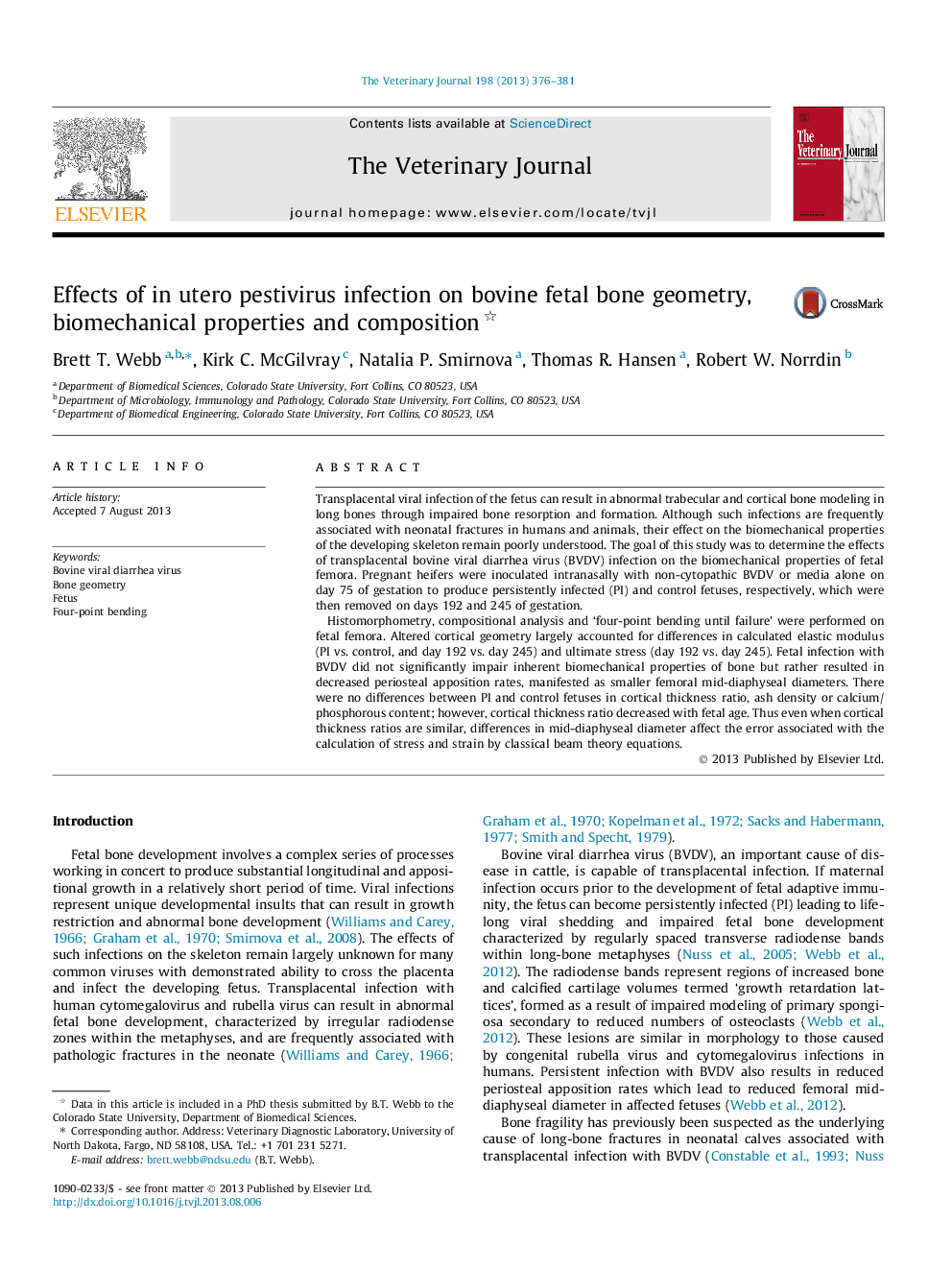| Article ID | Journal | Published Year | Pages | File Type |
|---|---|---|---|---|
| 2464114 | The Veterinary Journal | 2013 | 6 Pages |
Transplacental viral infection of the fetus can result in abnormal trabecular and cortical bone modeling in long bones through impaired bone resorption and formation. Although such infections are frequently associated with neonatal fractures in humans and animals, their effect on the biomechanical properties of the developing skeleton remain poorly understood. The goal of this study was to determine the effects of transplacental bovine viral diarrhea virus (BVDV) infection on the biomechanical properties of fetal femora. Pregnant heifers were inoculated intranasally with non-cytopathic BVDV or media alone on day 75 of gestation to produce persistently infected (PI) and control fetuses, respectively, which were then removed on days 192 and 245 of gestation.Histomorphometry, compositional analysis and ‘four-point bending until failure’ were performed on fetal femora. Altered cortical geometry largely accounted for differences in calculated elastic modulus (PI vs. control, and day 192 vs. day 245) and ultimate stress (day 192 vs. day 245). Fetal infection with BVDV did not significantly impair inherent biomechanical properties of bone but rather resulted in decreased periosteal apposition rates, manifested as smaller femoral mid-diaphyseal diameters. There were no differences between PI and control fetuses in cortical thickness ratio, ash density or calcium/phosphorous content; however, cortical thickness ratio decreased with fetal age. Thus even when cortical thickness ratios are similar, differences in mid-diaphyseal diameter affect the error associated with the calculation of stress and strain by classical beam theory equations.
